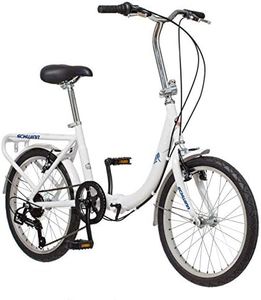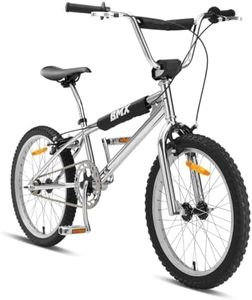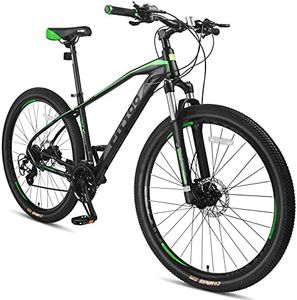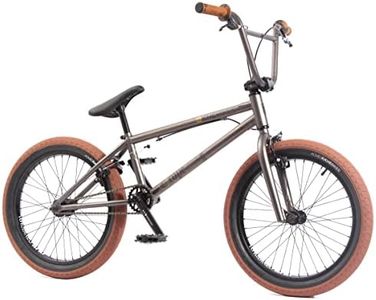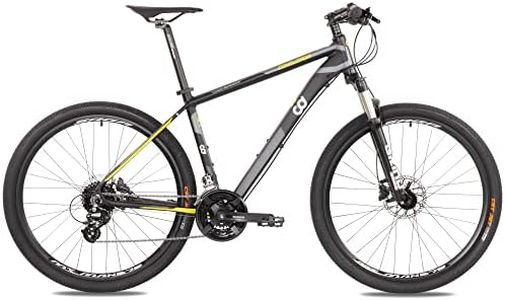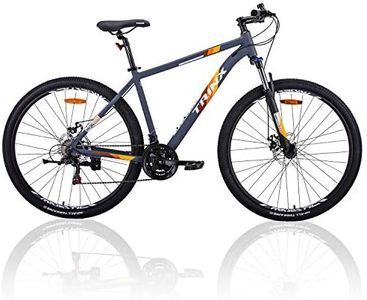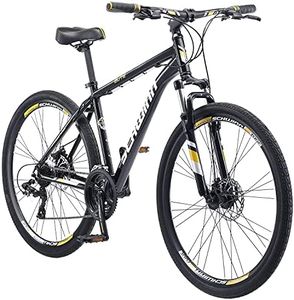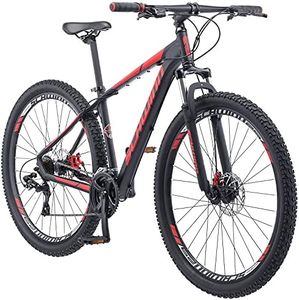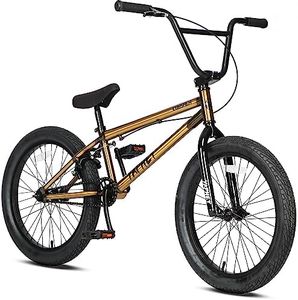We Use CookiesWe use cookies to enhance the security, performance,
functionality and for analytical and promotional activities. By continuing to browse this site you
are agreeing to our privacy policy
10 Best Bike For Teenager
From leading brands and best sellers available on the web.Buying Guide for the Best Bike For Teenager
Choosing a bike for a teenager is an exciting task because the right bike can encourage a lifelong love for cycling. When picking a bike, it's important to consider the teenager's physical development, riding habits, safety, and style preferences. The focus should be on finding a bike that matches their current size, intended use, and comfort level, making the experience enjoyable and safe, while also allowing some room for growth. Here are the key features to pay attention to when choosing a bike.Frame SizeFrame size refers to the length of the bike's main triangle, usually measured from the pedals to the seat. It's crucial because the wrong size can be uncomfortable and hard to handle safely. For teens, bikes come in a range of sizes to fit growing bodies. Typically, the right frame size allows the rider to touch the ground with their toes when sitting on the saddle and ride comfortably without overstretching their arms. To get this right, refer to the manufacturer’s sizing chart and, if possible, try different sizes to see which offers the best balance and control.
Wheel SizeWheel size impacts how the bike handles and fits the rider. Common wheel sizes for teenagers are 24 inches and 26 inches. Smaller wheels are easier to control and lighter, making them suitable for shorter or less experienced riders, while larger wheels roll faster and handle bumps better, which is good for taller teens or those looking to cover longer distances. Matching the wheel size to the teen's height and the kind of riding they do is the best approach—go smaller for younger, shorter, or casual riders and larger as they grow or get more adventurous.
Bike TypeThere are various types of bikes, such as mountain bikes, road bikes, hybrid bikes, and BMX bikes. The type refers to the bike’s design and intended use. For example, mountain bikes are built for trails and rough terrain, road bikes are lightweight and fast for smooth roads, hybrids are versatile for both, and BMX bikes are sturdy for tricks and stunts. The best choice depends on where and how often the teenager will ride. If they want to commute or cruise around town, a hybrid might work best; for off-road fun, a mountain bike is usually ideal.
GearingGearing refers to the number and range of gears available, which help the rider handle different types of terrain. Fewer gears make the bike simpler to use, while more gears make it easier to ride on hills and at higher speeds. Teens who are just starting out or riding mainly on flat ground may prefer bikes with 1-7 gears. Teens planning to ride in hilly areas or on longer trips might benefit from bikes with 18 or more gears for flexibility. Understanding the typical riding environment will help in picking the right gear set-up.
BrakesThere are different types of brakes: rim brakes and disc brakes are the most common. Brakes are crucial for safety. Rim brakes are lighter and simpler to maintain but might not work as well in wet conditions. Disc brakes, either mechanical or hydraulic, offer better stopping power, especially in all-weather situations, but they can be a bit heavier and more complex. For everyday use and beginner riders, rim brakes are sufficient. For those riding in mixed weather, on trails, or demanding more performance, disc brakes could be a safer option.
WeightThe bike’s weight affects how easy it is to handle, especially for smaller or less experienced riders. Lighter bikes are generally easier to ride, carry, and maneuver but sometimes cost more due to the materials used. For teens, a lighter bike can make cycling more enjoyable and encourage more frequent use. Aim for a bike the teenager can lift and move without much trouble, but don’t compromise safety or durability for the lightest possible option.
AdjustabilityAdjustability means how easily you can change the seat height and handlebar position. This is important for teens, as they may still be growing, and a bike with flexible adjustments can last longer and stay comfortable. Look for quick-release or easy-to-use adjustment parts so the rider can always have the bike set up for the best fit and posture. Prioritize this if you expect frequent changes as they grow.
